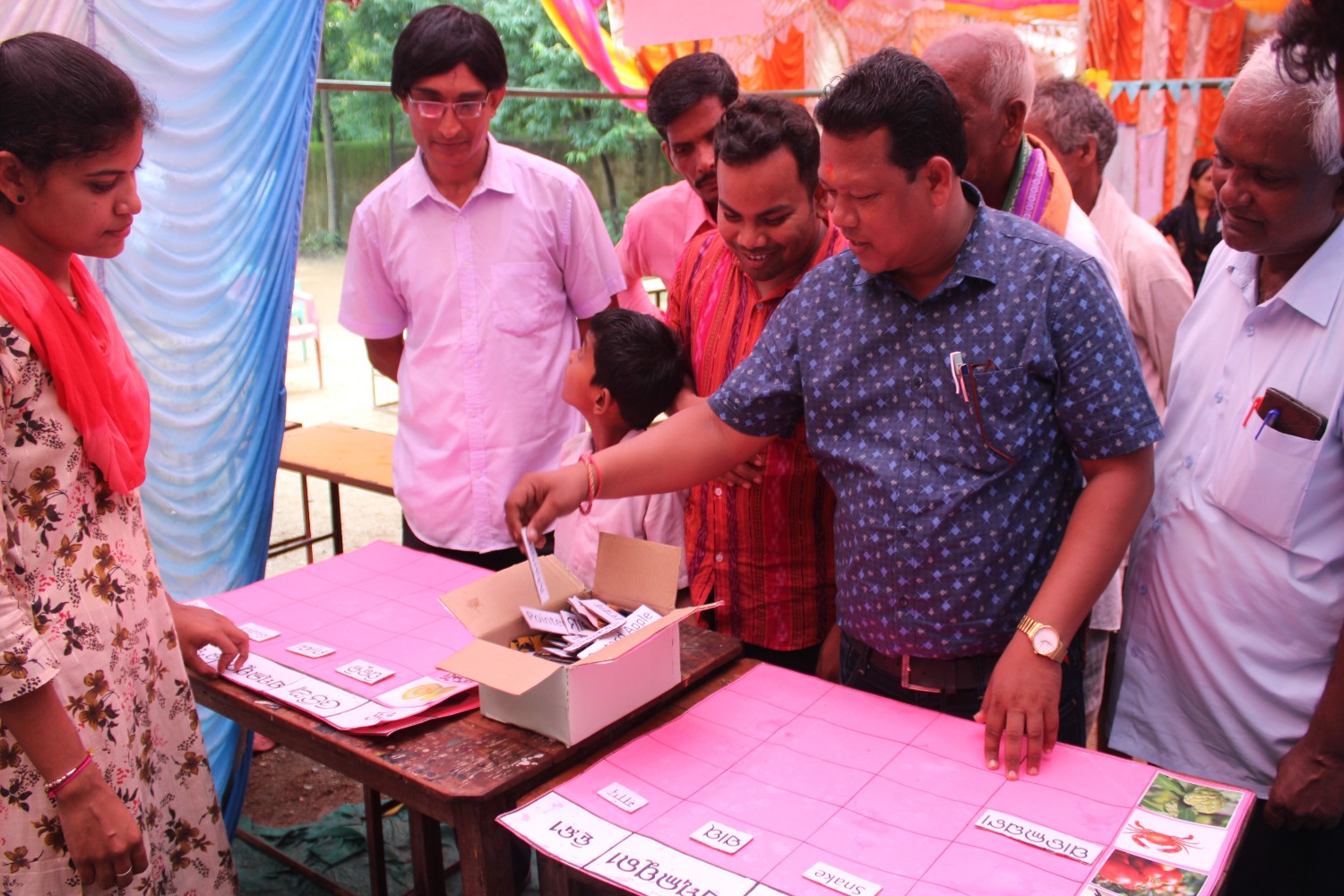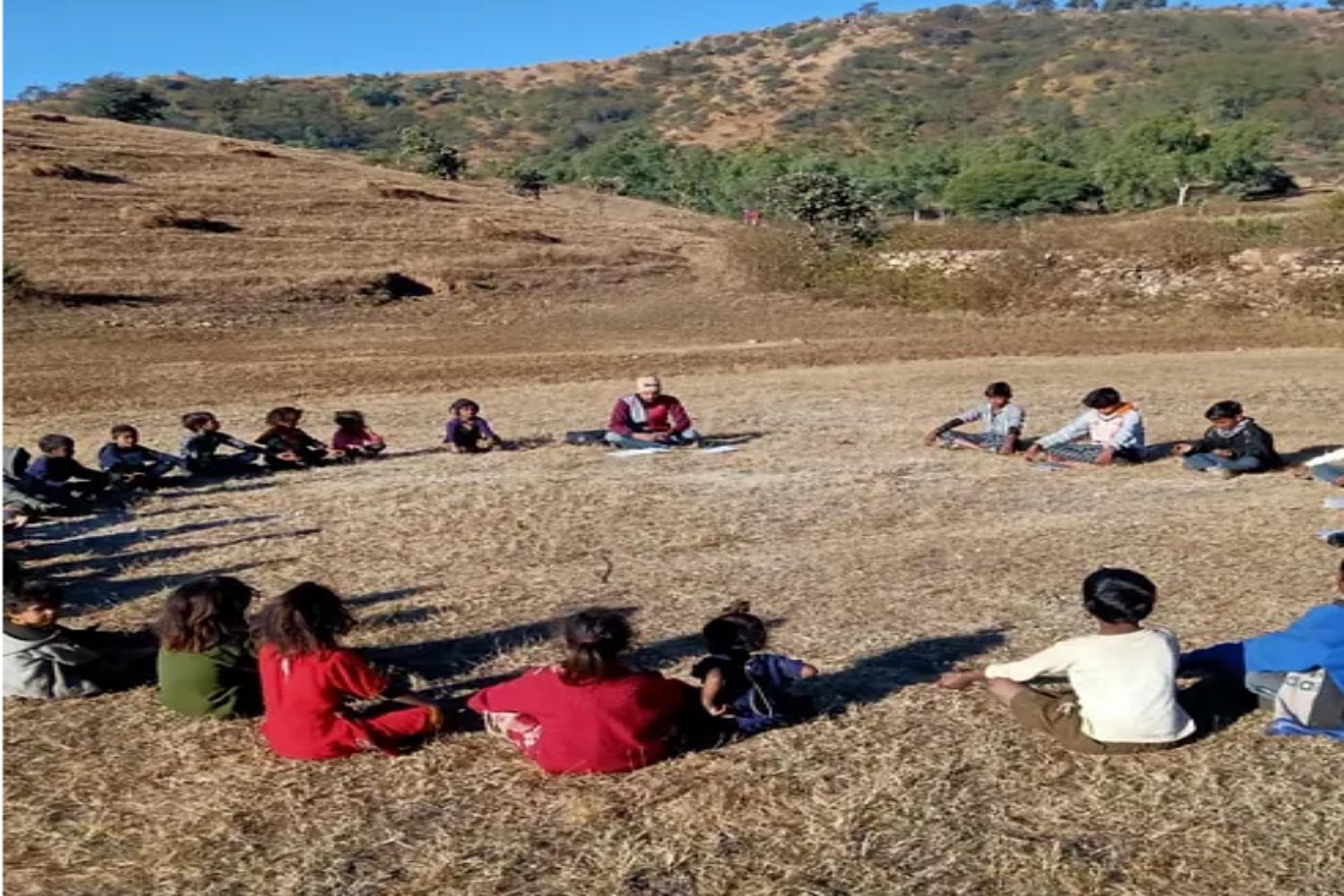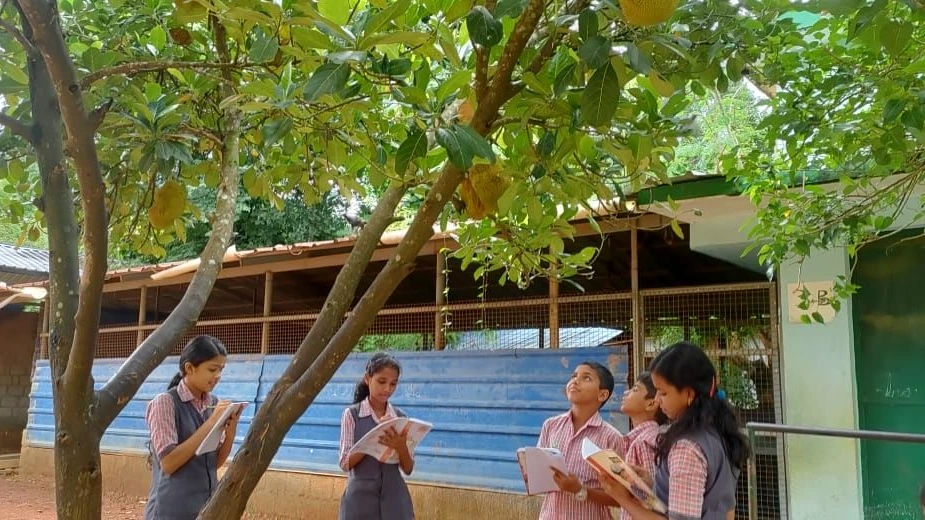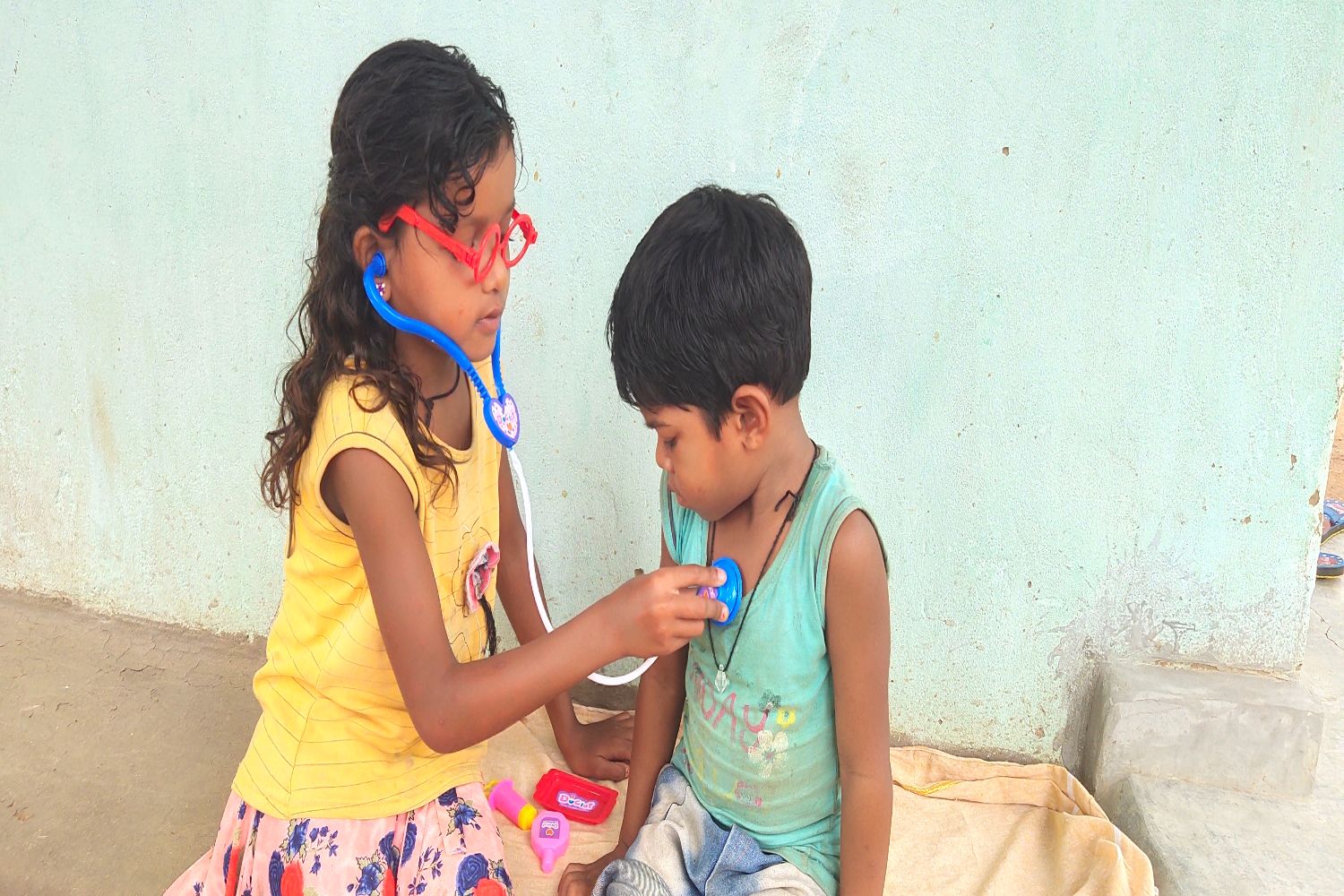Delivering against the odds
In her reflective piece titled “Delivering against the odds,” Rita Mishra highlights how it is possible to support the potential of the system and not merely fill in the gaps, by strengthening community processes that inspire the government for relevant action. She highlights the need for collaborative engagements with the government, the importance of engaging specific government officials, and the challenges of deftly mediating between short-term goals and long-term relationship building.

In a primary school in the village of Raisobha, in Bargarh district of Odisha, 45 young children sit in the scorching heat with one teacher trying to manage the class, while also ensuring that they learn something. This school lacks basic sanitation facilities, infrastructure, and a stimulating environment. Yet if one sits there among the children, one can’t help but smile at their enthusiasm and infectious energy. Despite all the constraints, the children show up at school day after day, for the sense of community it provides and for their desire to learn something new.
Any reference to the public school system in Odisha starts with a discussion about its numerous shortcomings. While it is essential to address these, one must not lose sight of the fact that these spaces are still valuable institutions that have meaning to their stakeholders and harbour tremendous potential. We at Patang, are deeply concerned about the problems plaguing the education system in Odisha. However, we have consciously abandoned the deficit lens and looked at the opportunities to intervene and add value.
Patang, an organization based in Western Odisha, works with children, adolescents and youth to build leadership for social change. In this article, we elaborate on our holistic approach to working with the government school system. This piece illustrates the evolution of our collaborative partnership with the government. It also emphasizes that it has grown through both direct engagements with the system, and via community-led initiatives.
Supporting potential, not filling gaps
In 2003, we launched an innovative life skills program in the Odia language, a concept that was relatively unknown at the time. Government-run schools expressed willingness to integrate lifeskills education. However, they grappled with understanding its specific components and implications. Over the course of a decade, we diligently implemented the lifeskills program in the Sambalpur region, securing permissions from individual schools.
We subsequently conducted a comprehensive program evaluation. This evaluation inspired confidence within educational institutions. It also emphasized our growing expertise in this domain. Recognizing our expertise, the Sarva Shiksha Abhiyaan in Sambalpur approached us to expand the program to various other schools. We were duly compensated for our efforts by the government.
Notably, this marked the first instance where government officials at the district level proactively engaged with us. However, the initial phase of this journey was not without challenges. Our team members, being relatively young, faced scepticism from teachers, and were at times dismissed by the schools and officials. Yet, our perseverance and long-term vision enabled us to overcome these initial hurdles.
When we embarked on our work with schools in the curricular domain in the primary grades, we promptly recognized a substantial issue: linguistic exclusion. In the region where we operate, children’s home languages are Sambalpuri, Munda, and others. The medium of instruction in the schools though is Odia.
We recognized the difficulties that teachers were facing due to this language barrier. This realization inspired us to delve into the Mother Tongue (MT)-based Multilingual Education (MLE) paradigm. Gradually, we enhanced our capability to implement the MLE approach in schools. We did this by actively engaging both the community and teachers in this process.
However, getting into the school system was not easy. The process of getting permission was long and tedious. Once we received permission to work in the schools by an ADEO. However, the approval was revoked by the DEO. This prompted us to access the school system through the School Management Committee (SMC) route.
Our community-led approach enabled us to enter schools and work with children in remote areas. We began our efforts by developing the first set of storybooks in the Sambalpuri language, with significant community participation. Following this, we set up learning centers within the schools to demonstrate the applications of the MLE framework.
Looking at the young team of Patang, earlier DEO (Mr Sudesh, name changed) was quite critical and questioned our capacity to work with children. Once, he visited a school and found the approach and TLMs stimulating and innovative. That experience changed his thinking. The participatory materials, local stories and rhymes captured the teachers’ attention. These ignited their curiosity and encouraged them to consider implementing the MLE framework officially.
Patang’s strategy involves inviting educational officials such as BEOs and CRCs to witness activities, and co-design initiatives like language melas, math melas, and book fairs. This has significantly reinforced the confidence of these officials in our educational endeavours.
Mr Saroj Kumar Bhue, Block Education Officer (BEO), Bhatli, Bargarh, expressed his admiration after observing the impact of the language mela, highlighting it as an innovative initiative for children to learn multiple languages in an engaging and enjoyable manner. He recognized the mela as an opportunity to unite various stakeholders, including teachers, parents, and the community, for the holistic linguistic and educational development of children, while praising Patang as a valuable educational resource for the entire Block.
Similarly, Mr Sudhansu Sekhar Mishra, BEO, Bargarh block, visited Katapali and Canalapada schools and witnessed the classroom environment. He stated, “I got inspired by the classroom processes and learning environment of the schools Patang works in, and suggest all our schools’ teachers from Bargarh Block to visit and learn on child-centric processes and classrooms.”

Our process of engaging with officials at different levels and showcasing our methodologies through real-life events such as winter and summer learning festivals, sports events, school assemblies, library activities, etc., has played a major role in strengthening our relationship with the education system. These interactions have streamlined the approval processes, leading BEOs to authorize teachers’ participation in Patang’s various training programs, as needed.
Motilal Jhankar, the Cluster Coordinator at Nua Barngamal, was instrumental in engaging teachers in training and consultation activities. He obtained official permission to conduct a meeting at Kalpa School, made all the necessary arrangements, and actively facilitated teacher participation.
Gradually, we have started receiving invitations to engage in meetings and discussions concerning educational policies and practices. We have also been included in several district-level committees. Additionally, we have organized consultations involving various stakeholders to garner support and refine our perspective.
To emphasize our dedication to the cause, we invited Prof. Ajit Mohanty, a globally reputed intellectual, to provide training for government schoolteachers in Sambalpur and Bargarh districts. Dr Mohanty’s insights reinforced the positive relationship between Mother Tongue-based Multilingual Education (MLE) and academic achievement and cognitive growth.

Mr Radhakanta Chhatri, ADEO, Bargarh, actively participated in a day-long MLE consultation in Sambalpur. He encouraged teachers to implement the MLE approach. With time, the educational system has become more open to our pedagogical style, recognizing it as child-centered, promoting joyful learning, and emphasizing comprehension rather than rote memorization.
Presently, we operate ten learning centers within schools in Bargarh. These serve 200 primary-level children. Additionally, we are in the process of creating a Training of Trainers (ToT) Manual for Mother Tongue-based MLE for Sambalpuri-speaking children. Our intention is to offer this training to teachers in primary schools across various districts following the pilot implementation of the manual.
Community processes inspired confidence among government officials for our endeavours
We have strengthened our intervention by establishing School Management Committees (SMCs). We have also engaged students in these SMCs and bolstered the capacity of SMC members to address school development needs. This process has yielded significant success. In many schools, SMC members have played pivotal roles by facilitating the recruitment of community teachers to enhance the teacher-pupil ratio, allocating resources for infrastructure improvements like water and electricity connections, and advocating for support from district officials.
As a follow-up, we are organizing training sessions for these community and ad-hoc teachers. The goal is to equip them to fulfil their roles effectively. Building on the gains made on the ground is another critical strategy for us.
Patang believes in building youth leadership for social change. Young volunteers, who are enrolled in our youth program, form youth groups in the villages. These youth leaders collaborate with schools, teachers, and School Management Committees (SMCs) and organize events. This process instils a sense of ownership for the village school. Instead of assigning blame for the school’s issues, they take responsibility for its state and recognize themselves as crucial stakeholders in its development. These volunteers further uplift school and teacher morale by organizing language melas (gatherings), book fairs, summer camps, children’s clubs and festivals. These efforts have produced positive outcomes. For instance, children’s attendance has increased in every school where we are involved. Youth groups have successfully reintegrated children who had dropped out due to caste-based discrimination. Many young volunteers have addressed caste-based discriminatory practices in schools by expressing their concerns to teachers and SMCs.
Collaborative engagement, not just extra hands
We, who collaborate with the school system, understand that our contributions are often perceived as mere supplementary assistance, rather than as partners working together to meet the larger vision of education. To address this challenge, we have implemented a three-pronged strategy. First, we have conducted teacher orientations in the schools where we operate. Second, we have clearly defined the roles of our organization and those played by the schools.
Third, we have gradually shifted toward a more teacher-led approach. For instance, we were particular about involving teachers during the development of teaching-learning material using cost-effective strategies, as well as during curriculum implementation and participatory activities. This strategy aims to ensure a smooth transition when we eventually step back.
We have conducted several workshops on designing Teaching-Learning Material (TLM), at the request of District Education Officers. Subsequently, schools have shown an interest in TLMs. While we have occasionally offered assistance, we have encouraged teachers to take the lead in creating these materials. This progression has been gradual, with our emphasis being on skill transfer and empowering teachers to be the principal drivers of change.
The Patang team also provides essential support to schools and teachers in executing important mandates. As part of the Education Department’s “Surabhi Program,” held in schools to spotlight students’ talents, we were invited to participate as judges for which our entire team took time out. It was a privilege to witness the remarkable journeys of our children and to encourage them. These efforts deepen relationships with the school system in local areas.
Short-term goals and long-term relationship
Our experience has taught us that engaging with the education system, whether through a top-down approach or a bottom-up one, requires a long-term outlook. A collaborative and demand-driven strategy is the most effective alternative in this context. This strategy focuses on empowering teachers to take the lead, instead of simply following directives coming from the state capital. This is important, because often they carry out activities as a matter of compliance, without fully internalizing the underlying objectives.
Through our process, teachers demonstrate receptiveness to interventions and tailor them to their specific needs. They do not perceive these as an additional burden. Introducing new ideas can pose challenges. However, evidence of practicality and effectiveness help to sway stakeholders.
For instance, initially, difficulties in accessing storybooks and TLMs affected the quality of teaching within classrooms. However, when we introduced creative methodologies, pragmatic activities, and resources through our teachers’ training programs, teachers took to the concept enthusiastically, as they saw the merit in this pedagogy.
It is crucial to emphasize that while some interventions receive cooperation when tailored to specific needs, there are occasions when it becomes necessary to advocate for certain agendas. In one co-ed school, teachers traditionally adhered to segregated seating arrangements in the classroom. Our attempts to challenge this were initially met with resistance.
However, through consistent and positive engagement, the school’s stakeholders have undergone a remarkable transformation in their attitude. They are now unconditionally sending students to our programs. They have even organized various gender sensitization initiatives, such as mixed-gender cricket matches within the school.
What we have learned from our experience is that approaching schools without well-laid out processes does not work. It is essential to monitor and track the progress of any initiative to ensure that it stays on the right path. In doing so, a concerted effort should be made to accumulate evidence that supports the effectiveness of the project.
This evidence can serve a dual purpose. First, to advocate for the continued success and expansion of the program. Second, to identify areas in which course correction might be needed.
Clear, well-defined processes help minimize disruption. These also motivate teachers and communities by ensuring that everyone understands their role and responsibilities in achieving the project’s goals. These are the areas where we are currently placing an increased focus.
What has worked for us
- Share relevant ideas, updates, research and innovations periodically with government officials
- Personalized messages for accomplishments
- Sharing photos, reports and case studies to showcase on government platforms
- Displaying materials on office notice boards and maintaining “partnership” files for reference
- Seeking inputs and suggestions for activities and training
- Two-way partnership: attending department’s programs
- Appreciating efforts, through teacher recognition events and school felicitation ceremonies
- Engaging experts to bring new information and research to the district-level
- Collaborating with academics, researchers and policymakers to enhance education
- Involving district and block level administration, DEOs, and department officials in Patang’s events and programs
- Facilitating stakeholder convergence through consultations
- Coordinating joint visits with department officials
Conclusion
Collaborating with the public school system is an ongoing journey marked by its inherent bureaucratic complexities. Administrative demands often compel teachers to take on managerial roles. This limits the capacity to fully embrace their roles as educators. Given this backdrop, the perspective from which our interventions are executed assumes paramount significance.
It is incumbent upon our organization to consistently evaluate the value we bring to our partnership with the public education system. We have tried to devise strategies to ensure both successful delivery and sustained momentum over time. Despite the formidable challenges they face, schools in remote villages continue to play a pivotal and commendable role in Indian society, consistently defying the odds.




No approved comments yet. Be the first to comment!